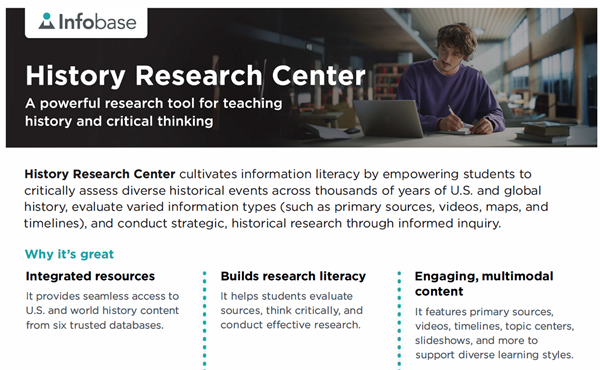What is it?
History Research Center cultivates information literacy by empowering students to critically assess diverse historical events across thousands of years of U.S. and global history, evaluate varied information types (such as primary sources, videos, maps, and timelines), and conduct strategic, historical research through informed inquiry.
Databases included

- African-American History
- American History
- American Indian History
- Ancient and Medieval History
- Modern World History
- World Religions
Why it's great
Integrated resources
It provides seamless access to U.S. and world history content from six trusted databases.
Builds research literacy
It helps students evaluate sources, think critically, and conduct effective research.
Engaging, multimodal content
It features primary sources, videos, timelines, topic centers, slideshows, and more to support diverse learning styles.
Teaching and learning tools
Curriculum Planning Tools
Robust digital learning modules are grounded in instructional design frameworks including comprehension assessments and certifications.
Organize Your Projects
Find, save, and organize your materials for a project, lesson, or research task.
Topical Activities
Connect your course objectives and activities to current events. Our editorial team highlights key topics through curated centers, collection highlights, and featured resources.
Content Recommendations
Specific material related to the resource you are viewing is recommended for broader or deeper exploration.

“… [goes] into great depth … and feature[s] primary sources that are useful and often required for assignments.”
Library Journal
Take a closer look
Have questions? Want to see a demo? Connect with an expert however you like: email, phone, video, or in person.
